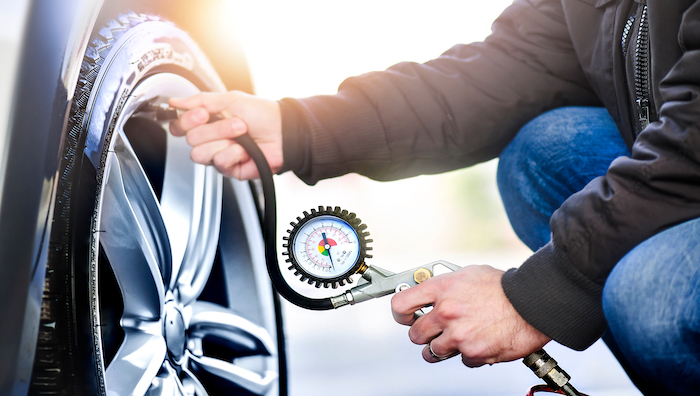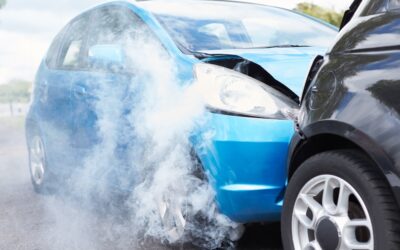All drivers should know how important it is to keep tyres in good working order. You should always be on the lookout for signs of wear and tear. Yet it’s just as important to ensure you’re driving with the correct tyre pressure for your vehicle.
So this post is an essential introduction to tyre pressure – what it is, why it’s important, and when and how you should increase it or decrease it.
What is Tyre Pressure?
Tyre pressure is a measure of the amount of air pumped into your tyre. This might be measured in pounds per square inch (PSI) or BAR. BAR is a metric unit of atmospheric pressure that’s equal to 14.5 pounds per square inch.
Why is Tyre Pressure Important?
Tyre pressure affects the performance, fuel economy, and safety of your vehicle. If your tyres are underinflated, they spread out more so more tyre touches the ground, this can lead to tyres getting hotter quicker, which can make blowouts more likely. Your stopping distance will also be increased and make handling less reliable.
If you have overinflated tyres this can lead to tyres wearing out faster. And because overinflated tyres will have a reduced contact area with the road, you’ll have less traction which also leads to longer stopping distances.
This is why it’s important to set the right tyre pressure for your car – neither under- or overinflated. Just right.
What’s The Right Tyre Pressure For My Car?
There are three quick ways to find the correct tyre pressure for your vehicle:
- Check your vehicle handbook.
- Look for a small sticker over on the driver’s door edge or inside the fuel filler cap.
- Contact the manufacturer. If you tell them your vehicle registration number, it’s make and model, and the size of your fitted tyres, then they should be able to advise you on the right tyre pressure for your vehicle.
Please note that the pressures specified in your handbook or on the information sticker will be for cold tyres – that is, tyres that haven’t been driven on for at least two hours.
When Should Tyre Pressure Be Checked?
You should aim to check your tyre pressures at least once every couple of weeks. But there are a few occasions when a tyre pressure check could make a huge difference to your road safety:
- Before you set out on a long journey.
- When you’re preparing to transport a particularly heavy load.
- Throughout the winter months, as cold weather can cause your tyre pressure to drop.
You should only ever check the pressure of cold tyres. So always check your tyre pressures at the start of your journeys. And if you need to drive to a garage to check or change your tyre pressures, make sure the garage is as close as possible, to prevent your tyres from heating up too much.
When Would You Increase Tyre Pressure?
If you look up the correct tyre pressures in your vehicle handbook, or on the small information sticker on the driver’s door edge or inside the filler cap, you might notice that they actually list two figures for the correct tyre pressure.
One figure will be the “normal” figure, which is the tyre pressure you should use for the majority of your driving.
But you may also see a higher figure, for full loads.
So if you’ll be driving with a full boot, then you should adjust your tyre pressure accordingly. A boot full of shopping shouldn’t make any difference. But if you’re moving house, going on holiday, or transporting a particularly heavy item from one place to another, then you may have to increase your tyre pressure to account for the increased load.
Do I Need to Increase My Tyre Pressure in the Winter?
Cold weather can make your tyre pressures drop slightly but there’s no need to overinflate your tyre in the winter months. You may have to check your tyres and adjust the pressure to the standard setting, as this will compensate for the reduced pressure brought about by the low temperatures but you should still only inflate your tyre to the advised level.
Some manufacturers may advise a different pressure for winter tyres (which may be listed as M+S, meaning mud and snow). But even then, the increased pressure will not be too much more than the “normal” pressure for standard tyres. You can read our complete guide to winter tyres here.
When To Change a Tyre
Different tyres have different lifespans, and the lifespan will vary depending on how often you drive, and on the sort of road surfaces you’ve driven on. Maintaining the correct tyre pressure can also prolong the life of your tyres.
But as a general rule of thumb, you should consider each individual tyre to have a lifespan of around five years. So after five years of use, make sure a trained professional checks your tyres at least once a year. They’ll be able to advise you on when it’s time for a change.
But you should also be on the lookout for signs of premature wear and tear, including punctures, cuts, bulges, or worn treads. Read our full guide to tyre safety checks.




